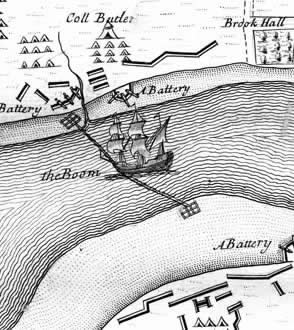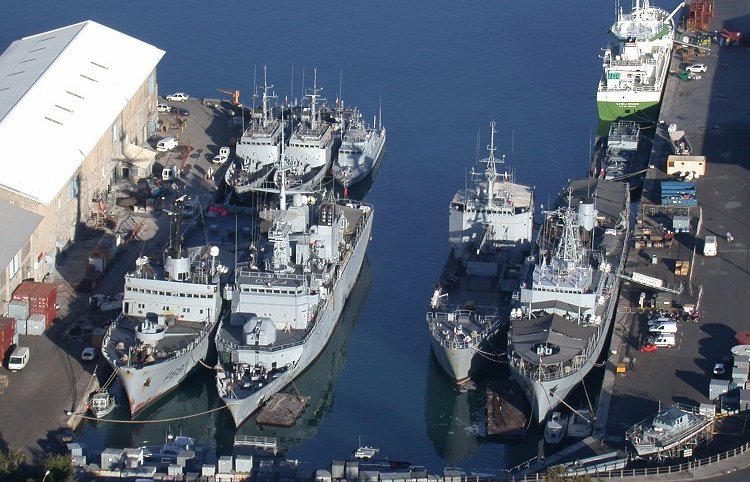|
Lakki, Leros
Lakki ( el, Λακκί), population 1990, also known by its former name Portolago (Πόρτο Λάγο), is a community on the Greek island of Leros, in the Dodecanese, at the head of Lakki Bay. The area was built up as the main base of the Italian Royal Navy in the Dodecanese starting in 1923. The town of Portolago was founded in the 1930s, under Italian rule, as a new model town, most of whose inhabitants were from the Italian military. After Leros was transferred to Greece in 1947, it was renamed Lakki. History Like the rest of the Dodecanese, Leros was ruled by Italy from 1912-1943. The Italian authorities founded the town of Portolago in the 1930s as a new model town, named after Mario Lago, the Governor of the Italian colony from 1922 to 1936. It is one of the best examples of Italian Rationalist and Fascist architecture, with buildings by and .Alex SakalisThe strange beauty of Greece's weirdest town BBC Culture/BBC Designed, 31 January 2018 The naval base included mu ... [...More Info...] [...Related Items...] OR: [Wikipedia] [Google] [Baidu] |
Leros
Leros ( el, Λέρος) is a Greek island and municipality in the Dodecanese in the southern Aegean Sea. It lies (171 nautical miles) from Athens's port of Piraeus, from which it can be reached by an 9-hour ferry ride or by a 45-minute flight from Athens, and about 20 miles to Turkey. Leros is part of the Kalymnos regional unit. The island has been also called in it, Lero. This island has population of 7,988 Geography The municipality has an area of . The municipality includes the populated offshore island of Farmakonisi (pop. 10), as well as several uninhabited islets, including Levitha and Kinaros, and had a 2011 census population of 7,917, although this figure swells to over 15,000 during the summer peak. The island has a coastline of . It is known for its imposing medieval castle of the Knights of Saint John possibly built on a Byzantine fortress. Nearby islands are Patmos, Lipsi, Kalymnos, and the small islands of Agia Kyriaki and Farmakos. In ancient times it w ... [...More Info...] [...Related Items...] OR: [Wikipedia] [Google] [Baidu] |
Rhodes
Rhodes (; el, Ρόδος , translit=Ródos ) is the largest and the historical capital of the Dodecanese islands of Greece. Administratively, the island forms a separate municipality within the Rhodes regional unit, which is part of the South Aegean administrative region. The principal town of the island and seat of the municipality is Rhodes. The city of Rhodes had 50,636 inhabitants in 2011. In 2022 the island has population of 124,851 people. It is located northeast of Crete, southeast of Athens. Rhodes has several nicknames, such as "Island of the Sun" due to its patron sun god Helios, "The Pearl Island", and "The Island of the Knights", named after the Knights of Saint John of Jerusalem, who ruled the island from 1310 to 1522. Historically, Rhodes was famous for the Colossus of Rhodes, one of the Seven Wonders of the Ancient World. The Medieval Old Town of the City of Rhodes has been declared a World Heritage Site. Today, it is one of the most popular tourist dest ... [...More Info...] [...Related Items...] OR: [Wikipedia] [Google] [Baidu] |
Naval Installations
A navy, naval force, or maritime force is the branch of a nation's armed forces principally designated for naval warfare, naval and amphibious warfare; namely, lake-borne, riverine, littoral zone, littoral, or ocean-borne combat operations and related functions. It includes anything conducted by surface Naval ship, ships, amphibious warfare, amphibious ships, submarines, and seaborne naval aviation, aviation, as well as ancillary support, communications, training, and other fields. The strategic offensive role of a navy is Power projection, projection of force into areas beyond a country's shores (for example, to protect Sea lane, sea-lanes, deter or confront piracy, ferry troops, or attack other navies, ports, or shore installations). The strategic defensive purpose of a navy is to frustrate seaborne projection-of-force by enemies. The strategic task of the navy also may incorporate nuclear deterrence by use of submarine-launched ballistic missiles. Naval operations can be broa ... [...More Info...] [...Related Items...] OR: [Wikipedia] [Google] [Baidu] |
Italian Fascist Architecture
Italian(s) may refer to: * Anything of, from, or related to the people of Italy over the centuries ** Italians, an ethnic group or simply a citizen of the Italian Republic or Italian Kingdom ** Italian language, a Romance language *** Regional Italian, regional variants of the Italian language ** Languages of Italy, languages and dialects spoken in Italy ** Italian culture, cultural features of Italy ** Italian cuisine, traditional foods ** Folklore of Italy, the folklore and urban legends of Italy ** Mythology of Italy, traditional religion and beliefs Other uses * Italian dressing, a vinaigrette-type salad dressing or marinade * Italian or Italian-A, alternative names for the Ping-Pong virus, an extinct computer virus See also * * * Italia (other) * Italic (other) * Italo (other) * The Italian (other) The Italian may refer to: * ''The Italian'' (1915 film), a silent film by Reginald Barker * ''The Italian'' (2005 film), a Russian film by An ... [...More Info...] [...Related Items...] OR: [Wikipedia] [Google] [Baidu] |
Planned Cities In Greece
Planning is the process of thinking regarding the activities required to achieve a desired goal. Planning is based on foresight, the fundamental capacity for mental time travel. The evolution of forethought, the capacity to think ahead, is considered to have been a prime mover in human evolution. Planning is a fundamental property of intelligent behavior. It involves the use of logic and imagination to visualise not only a desired end result, but the steps necessary to achieve that result. An important aspect of planning is its relationship to forecasting. Forecasting aims to predict what the future will look like, while planning imagines what the future could look like. Planning according to established principles is a core part of many professional occupations, particularly in fields such as management and business. Once a plan has been developed it is possible to measure and assess progress, efficiency and effectiveness. As circumstances change, plans may need to be modifie ... [...More Info...] [...Related Items...] OR: [Wikipedia] [Google] [Baidu] |
Submarines
A submarine (or sub) is a watercraft capable of independent operation underwater. It differs from a submersible, which has more limited underwater capability. The term is also sometimes used historically or colloquially to refer to remotely operated vehicles and robots, as well as medium-sized or smaller vessels, such as the midget submarine and the wet sub. Submarines are referred to as ''boats'' rather than ''ships'' irrespective of their size. Although experimental submarines had been built earlier, submarine design took off during the 19th century, and they were adopted by several navies. They were first widely used during World War I (1914–1918), and are now used in many navies, large and small. Military uses include attacking enemy surface ships (merchant and military) or other submarines, and for aircraft carrier protection, blockade running, nuclear deterrence, reconnaissance, conventional land attack (for example, using a cruise missile), and covert insertio ... [...More Info...] [...Related Items...] OR: [Wikipedia] [Google] [Baidu] |
Torpedo Boat
A torpedo boat is a relatively small and fast naval ship designed to carry torpedoes into battle. The first designs were steam-powered craft dedicated to ramming enemy ships with explosive spar torpedoes. Later evolutions launched variants of self-propelled Whitehead torpedoes. These were inshore craft created to counter both the threat of battleships and other slow and heavily armed ships by using speed, agility, and powerful torpedoes, and the overwhelming expense of building a like number of capital ships to counter an enemy's. A swarm of expendable torpedo boats attacking en masse could overwhelm a larger ship's ability to fight them off using its large but cumbersome guns. A fleet of torpedo boats could pose a similar threat to an adversary's capital ships, albeit only in the coastal areas to which their small size and limited fuel load restricted them. The introduction of fast torpedo boats in the late 19th century was a serious concern to the era's naval strategists ... [...More Info...] [...Related Items...] OR: [Wikipedia] [Google] [Baidu] |
Destroyer
In naval terminology, a destroyer is a fast, manoeuvrable, long-endurance warship intended to escort larger vessels in a fleet, convoy or battle group and defend them against powerful short range attackers. They were originally developed in 1885 by Fernando Villaamil for the Spanish NavySmith, Charles Edgar: ''A short history of naval and marine engineering.'' Babcock & Wilcox, ltd. at the University Press, 1937, page 263 as a defense against torpedo boats, and by the time of the Russo-Japanese War in 1904, these "torpedo boat destroyers" (TBDs) were "large, swift, and powerfully armed torpedo boats designed to destroy other torpedo boats". Although the term "destroyer" had been used interchangeably with "TBD" and "torpedo boat destroyer" by navies since 1892, the term "torpedo boat destroyer" had been generally shortened to simply "destroyer" by nearly all navies by the First World War. Before World War II, destroyers were light vessels with little endurance for unat ... [...More Info...] [...Related Items...] OR: [Wikipedia] [Google] [Baidu] |
Seaplane
A seaplane is a powered fixed-wing aircraft capable of takeoff, taking off and water landing, landing (alighting) on water.Gunston, "The Cambridge Aerospace Dictionary", 2009. Seaplanes are usually divided into two categories based on their technological characteristics: floatplanes and flying boats; the latter are generally far larger and can carry far more. Seaplanes that can also take off and land on airfields are in a subclass called amphibious aircraft, or amphibians. Seaplanes were sometimes called ''hydroplanes'', but currently this term applies instead to Hydroplane (boat), motor-powered watercraft that use the technique of Planing (boat), hydrodynamic lift to skim the surface of water when running at speed. The use of seaplanes gradually tapered off after World War II, partially because of the investments in airports during the war but mainly because landplanes were less constrained by weather conditions that could result in sea states being too high to operate seaplan ... [...More Info...] [...Related Items...] OR: [Wikipedia] [Google] [Baidu] |
Boom (navigational Barrier)
A boom or a chain (also boom defence, harbour chain, river chain, chain boom, boom chain or variants) is an obstacle strung across a navigable stretch of water to control or block navigation. In modern times they usually have civil uses, such as to prevent access to a dangerous river channel. But, especially historically, they have been used militarily, with the goal of denying access to an enemy's ships: a modern example is the anti-submarine net. Booms have also been used to force passing vessels to pay a toll. Description A boom generally floats on the surface, while a chain can be on the surface or below the water. A chain could be made to float with rafts, logs, ships or other wood, making the chain a boom as well. Historical uses Especially in medieval times, the end of a chain could be attached to a chain tower or boom tower. This allowed safe raising or lowering of the chain, as they were often heavily fortified. By raising or lowering a chain or boom, access could be ... [...More Info...] [...Related Items...] OR: [Wikipedia] [Google] [Baidu] |
Naval Base
A naval base, navy base, or military port is a military base, where warships and naval ships are docked when they have no mission at sea or need to restock. Ships may also undergo repairs. Some naval bases are temporary homes to aircraft that usually stay on ships but are undergoing maintenance while the ship is in port. In the United States, the United States Department of the Navy's General Order No. 135 issued in 1911 as a formal guide to naval terminology described a naval station as "any establishment for building, manufacturing, docking, repair, supply, or training under control of the Navy. It may also include several establishments". A naval base, by contrast, was "a point from which naval operations may be conducted". In most countries, naval bases are expressly named and identified as such. One peculiarity of the Royal Navy and certain other navies which closely follow British naval traditions is the concept of the stone frigate: a naval base on land that is named l ... [...More Info...] [...Related Items...] OR: [Wikipedia] [Google] [Baidu] |









